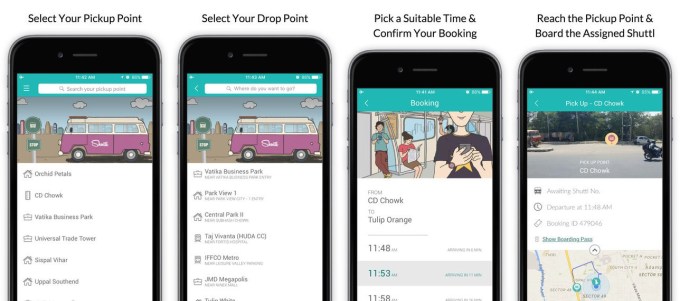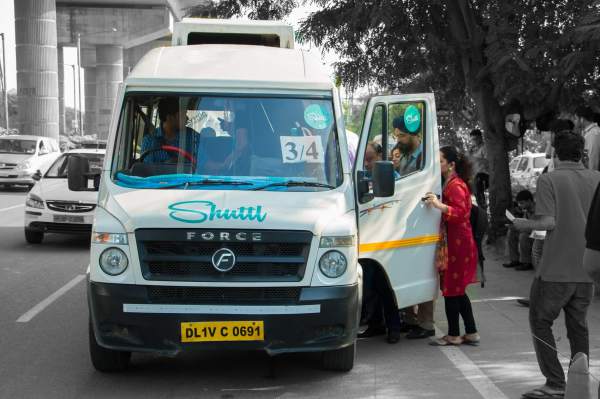India’s transportation app future isn’t just about Uber and billion-dollar homegrown rival Ola. That’s because Shuttl, an eight-month-old startup that provides air-conditioned minibuses, just raised $20 million from Lightspeed, Sequoia and Uber-investor Times Internet to develop its technology and expand its service.
While this Series A funding pales somewhat into insignificance given the vast amounts of money raised by Uber — which dedicated $1 billion solely to its India-based business — and Ola — which recently raised $500 million and has taken more than $1.1 billion from investors to date — it is impressive for a service that only launched in April of this year.
Founded by IIT Delhi alumni Amit Singh & IIT Kanpur alum Deepanshu Malviya, the service lets commuters find a route, buy their ticket and take a bus via its iOS, Android and Windows Phone apps. Shuttl is currently active in Delhi, where it offers 50 routes and 500 buses, and handles 15,000 rides per day across the metropolitan area. The company said its prices range from around 20-100 INR, or roughly $0.30 to $1.50. To date, it says it has completed 800,000 customer rides.
“We exist to solve the office commute problem while positively impacting issues like congestion, pollution and safety,” Shuttle co-founder Singh said in a statement. “We believe buses are the most space efficient way to commute and we have added a technology layer on to them to build what could become a template for smart cities in India and abroad.”
Singh told TechCrunch in an interview that the first priority is to develop Shuttl’s tech stack. That means improving route optimization, helping maximize occupancy of buses and more. Making the service efficient is the key to creating a profitable business, Singh explained, pointing out that — unlike Ola, Uber and others — Shuttl doesn’t need burn cash by offering deep discounts for consumers since bus tickets are already lower than taxis and taxi on-demand services.

The company also plans to expand its presence in Delhi — a city with a population of more than 10 million — to cover more routes.
“It’s such a huge market,” Singh said. “People thought [that the expansion of the] Delhi Metro would mean bus services would lose customers. But, as the commute options become better, people tend to start commenting more.”
Once the company has expanded its coverage of Delhi, it plans to venture into India’s other mega cities, such as Bangalore, Mumbai and Hyderabad. But, Singh cautions, that is likely to take from six to 18 months to materialize.
“This is a business that requires coverage,” he added of Shuttl’s deliberately slow growth plans. “The more [bus routes] you have, the quicker the network effects kick in.”
While it may have been first to the idea, Shuttl isn’t alone in pioneering shared, bus transportation in India. Ola announced plans for its own shuttle service in September, and that went live in Delhi and Bangalore on December 13. (The idea seems to have been imported from China, where Ola investor and partner Didi Kuaidi launched a bus service in July.)
But Singh declined to get into the specifics of Shuttl’s services versus Ola’s. Instead, he said he believes that the biggest challenge is lack of adoption, so more smart shuttle services on the market is good news for all in the industry.
“With 15-20 million daily rides in [Delhi,] it’s not the right thing to focus on another company that’s doing something similar. That’s a very narrow look at the market. Penetration is zero percent… so competition only helps. But we’re the first mover, and we have capital.” he commented.
Singh was happy to provide color on Shuttl’s hiring plans, the third area where the Series A capital will be spent.
Right now, the company has a team of around 140, of which nearly 60 are tech or data science-focused staff. Singh intends to double that tech and data team over the next six months and, beyond looking at the talent pool in India, he said Shuttl has reached out to Indians working in overseas, particularly in the U.S..
“We are actively looking for people in the Valley who want to come back and make an impact in an industry that is solving problems of congestion and pollution,” he said. “The social impact in this industry is huge — it’s a rare opportunity to not just work in a startup environment but [to also] solve huge problems.”
